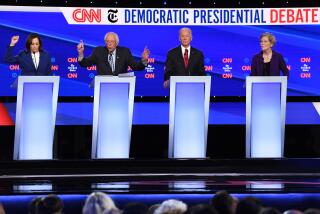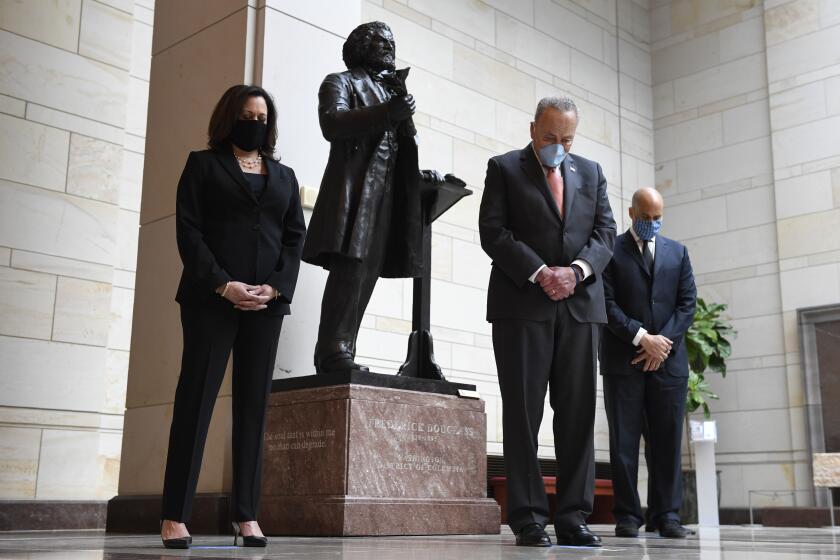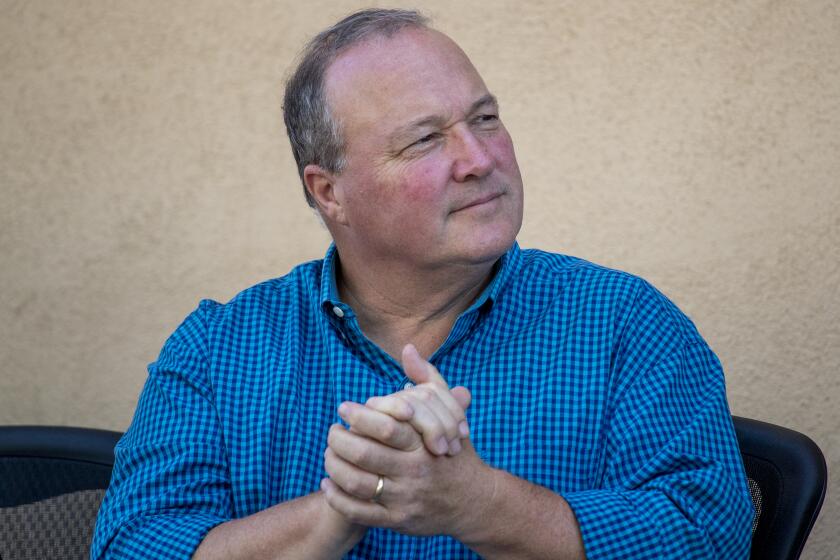The Strategy Beneath the Flip-Flop Label
The White House has succeeded in supplying the news media with a frame for understanding the Kerry campaign: It claims the Democratic candidate is -- to use the dreaded word -- a flip-flopper. Now that the flip-flop notion has stuck, any new position Kerry rolls out, any claim he makes -- even any rebuttal he offers to the smear -- is viewed through this frame and subtly reinforces its legitimacy.
The truth is, however, that all politicians flip-flop. Kerry has changed his position on various issues in his career, but no more so than George W. Bush. Bush, after all, refused at first to create a Homeland Security Department or appoint a national intelligence director, but then did. Similarly, on nation-building and North Korea, on the acceptability of deficits and the urgency of capturing Osama bin Laden -- even on whether we’ve found deadly weapons in Iraq -- he has flipped, flopped or double-reversed.
This (partial) inventory isn’t meant to suggest that Bush lacks principles -- although it should make one reconsider the common gloss on him as a man of rock-ribbed convictions. The point is that politicians regularly revise their positions. They rethink an issue, or circumstances change, or (yes) they act expediently. At other times, a flip-flop is really just a qualified position, such as John Kerry’s wanting to force Iraq’s compliance with weapons inspections while decrying a hasty, unprovoked invasion. Simply put, flip-flopping -- or straddling or waffling -- is never a meaningful charge; it’s only a strategic device, a comment about form, not substance.
The flip-flop line of attack has grown increasingly popular. As far back as the 1972 election, critics pinned the tag on Ed Muskie (on the Vietnam War), George McGovern (for his views on welfare) and Richard Nixon (for his statements about amnesty for draft resisters).
By the 1988 primaries, flip-flop charges had hit the big time. Michael Dukakis’ ads depicted Dick Gephardt doing literal flip-flops (handsprings) on Reaganomics, the minimum wage and freezing Social Security benefits. George H.W. Bush, meanwhile, vilified Bob Dole as “Sen. Straddle” vacillating on taxes. In 1992, Bill Bradley, speaking on Bill Clinton’s behalf, turned the tables, mocking the elder Bush -- who had pledged no new taxes, then raised them and then apologized for it -- for having “waffled, wiggled and wavered.” The president, for his part, made “trust” his reelection theme, lambasting Clinton for shilly-shallying on offshore oil drilling, fuel efficiency standards and other issues.
If the charge is so hackneyed and so empty, why does it so often work? Some journalists, justifying the undue coverage they’ve given to the rap against Kerry, insist that a flip-flopping image sticks only if it taps into preexisting doubts about a candidate’s steadfastness. But they overlook that voters usually don’t have a preexisting picture of the smeared candidate when they first hear the charges of inconstancy.
There are better ways to explain the potency of the charge. For one thing, since Watergate, journalists and voters have paid increased attention to the “character” of presidential aspirants. Just as telling any lies -- even about private matters like sex -- is construed as proof of a deep-seated penchant for deceit, so any hint of inconsistency in the public record can sow doubts about core principles.
Second, the public and media have grown cynical about the huge apparatus of polling, focus groups, public relations, image-crafting and spin that has come to dominate campaigns. Flip-flopping charges play on widespread anxieties that politics today have become a phony spectacle, wholly inauthentic.
Third, the 9/11 attacks revived an old Cold War dynamic in which voters placed trust in candidates who talked tough. Never mind that high-stakes decisions often require the most thoughtful deliberation; someone seen as unsure of himself is easily cast as a danger to our safety.
Finally, flip-flop attacks appeal to the media. Typically, journalists seesaw between challenging authority and maintaining their image as neutral, devoted to the facts. If they can show a politician to be contradicting himself, journalists can have it both ways, brandishing their adversarial chops while still styling themselves as keepers of the factual record.
But their obeisance to these mandates leads them into error. In the 2000 campaign, George W. Bush employed a technique against Al Gore that was similar to the one he’s now using against Kerry. Gore certainly had his flaws as a candidate, but he had never been known for a lack of integrity (if anything, his problem was being too much of a straight arrow). The Bush campaign seized on a few remarks that the vice president made -- and others that were wrongly attributed to him -- to fabricate a portrait of a liar. Thus, when Gore misremembered which official he accompanied to a Texas fire scene, Bush accused him of lying. Several days of negative press coverage followed, hurting Gore.
The same strategy underpins the current, equally illegitimate effort to brand Kerry a flip-flopper. As Grover Norquist, a top Republican strategist, explained in March, if you say “ ‘Gore fibs,’ or ‘Kerry will say anything to get elected,’ that has an effect.” He added: “If Kerry will say anything, do anything, flip-flop, then when he gets in a corner down the road and changes his position, you’ll say he doesn’t mean it. He can’t say anything to endear him to you if you’ve been convinced he’ll say anything.”
As Norquist’s remarks show, the irony of the flip-flop charge is that it’s meant to expose the phoniness, opportunism and political calculation at the heart of its target. In fact, it is proof of those very qualities in those who level it.
More to Read
Get the L.A. Times Politics newsletter
Deeply reported insights into legislation, politics and policy from Sacramento, Washington and beyond. In your inbox three times per week.
You may occasionally receive promotional content from the Los Angeles Times.










